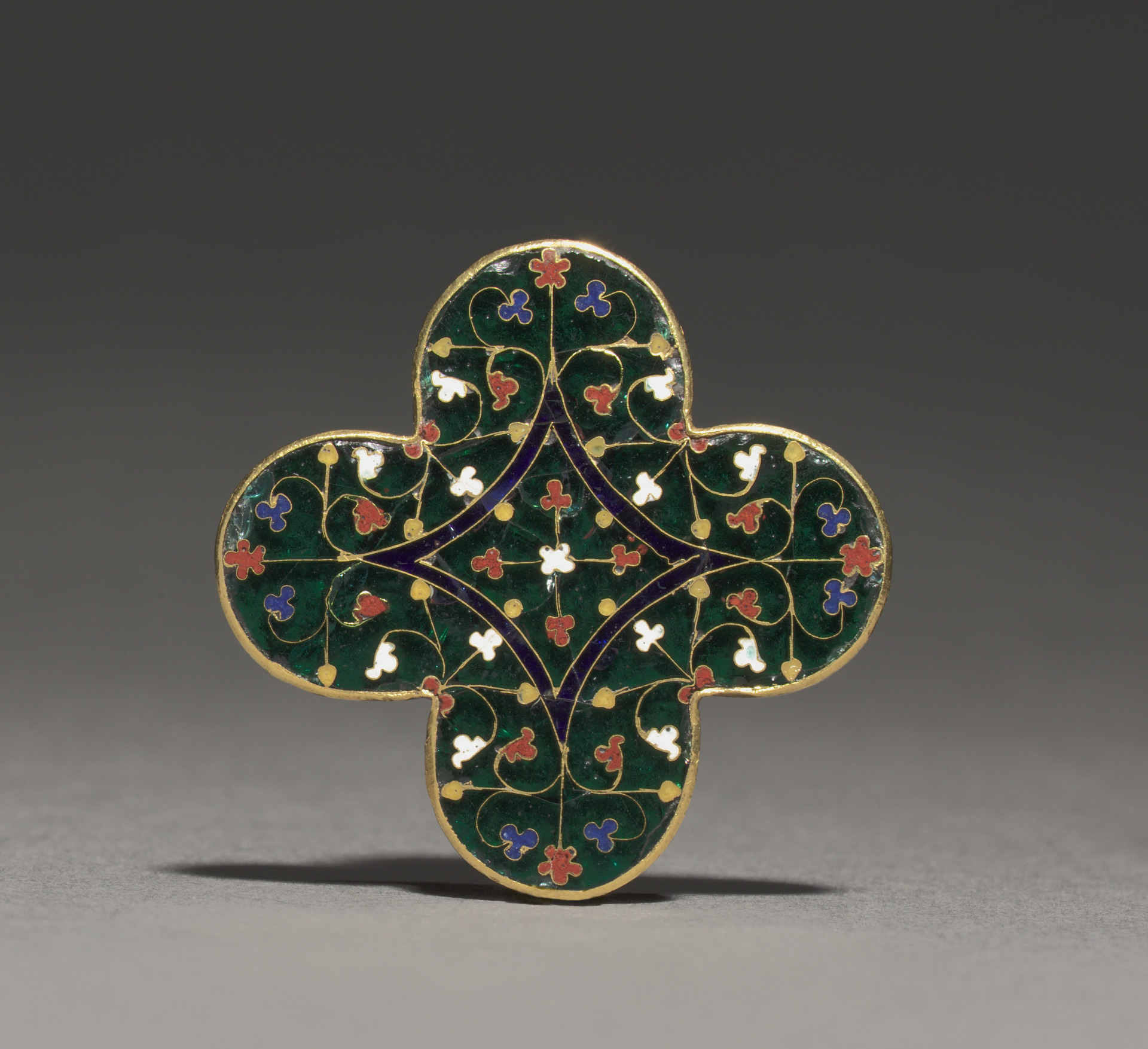
- Magazine Article
- Collection
A Gem of an Enamel
Take a closer look at a tiny 13th-century plaque from Paris

This rare quatrilobed (four-lobed) plaque exemplifies the enameling technique known as émail de plique. Here the enameling consists of opaque hearts, clovers, rosettes, and leaves in white, red, blue, and yellow connected by golden vines and arranged against a field of magnificent translucent emerald green.
Highly prized, émail (plural: émaux) de plique is related to plique-à-jour, a virtuoso enameling technique that is difficult to master and execute. The technique used here resembles cloisonné enamel, in which silver or gold wires are soldered or adhered to the surface of a metal object to form compartments (cloisons in French). These compartments are then filled with enamel paste and fired in a kiln. Cloisonné uses opaque enamels; in contrast, plique-à-jour uses transparent enamels, and when done without a back plate resembles miniature stained glass windows. Although the émaux de plique have back plates, the design ele-ments rest on a translucent background.

Widely popular during the late 1200s in Paris, émail de plique became synonymous with the French goldsmith Guillaume Julien (1256–1316), who worked for French king Philip the Fair (reigned 1285–1315). Julien’s best-known enamels decorated a reliquary bust of Saint Louis, now lost, commissioned by Philip the Fair in 1306 for the royal relic chapel of Sainte-Chapelle in Paris. Although the reliquary no longer exists, a preserved enamel plaque in the shape of a foliole, or leaf, illustrated here, is said to be part of the orphrey, or ornamental border, of the original figure. This plaque bears a striking resemblance to the Cleveland plaque in the superiority of its execution and design composition, linking Cleveland’s plaque with Guillaume Julien. However, an attribution to Julien’s workshop is problematic. The design of vines differs between the two objects, for example, and Julien was not the only artisan to produce émaux de plique at court. Records from around 1300 mention other Parisian goldsmiths working for the king and the basilica of Saint Denis as producing precious objects adorned with similar enameled plaques.
Small plaques such as Cleveland’s were often prepared in advance to be attached as decorative elements to other works, including reliquaries, crosses, and chalices, or even sewn into precious fabrics. Of the few plaques surviving in situ, the majority adorn reliquaries alongside gems and semiprecious stones. Given this plaque’s precise shape, it is certain to have been created for a specific commission.
Even at the time of their manufacture, these luxurious plaques, used to decorate exquisite sacred objects, were highly prized. Only a handful from the Parisian workshops remain, most of them separated from their original vessels. Although diminutive in size, Cleveland’s enamel is worth a closer look. Its dimensions belie its importance and rarity.
